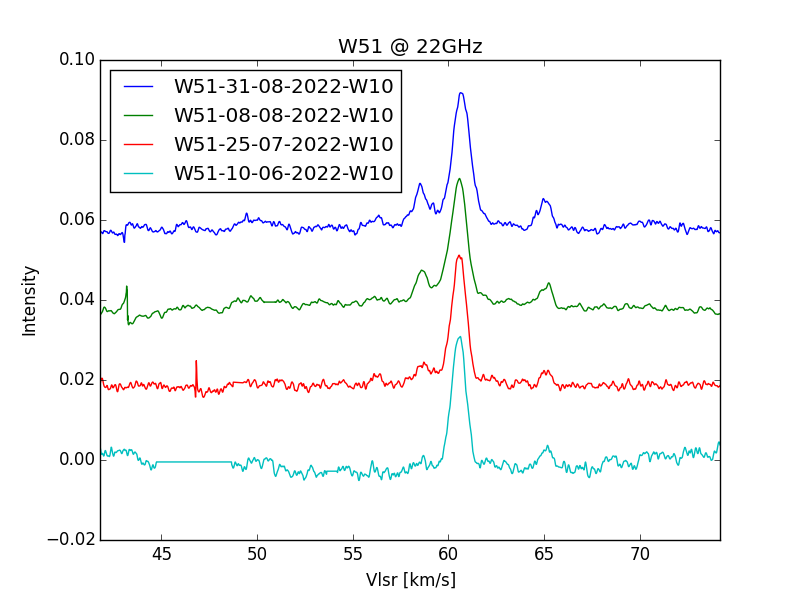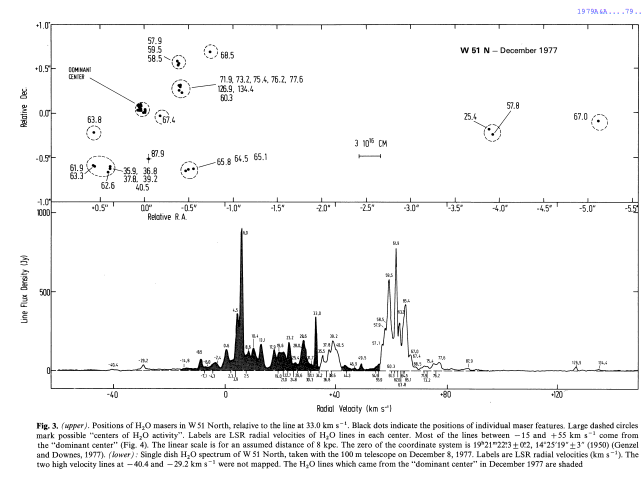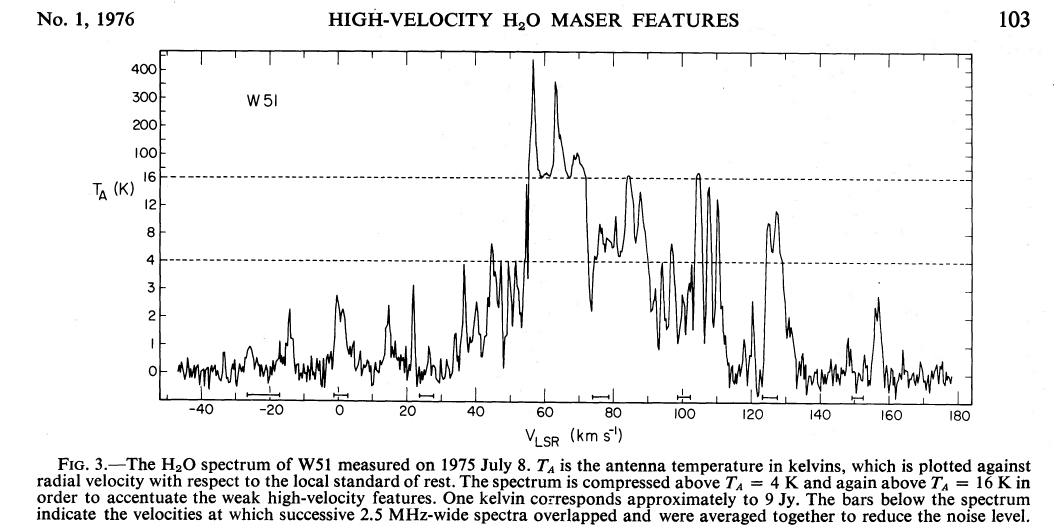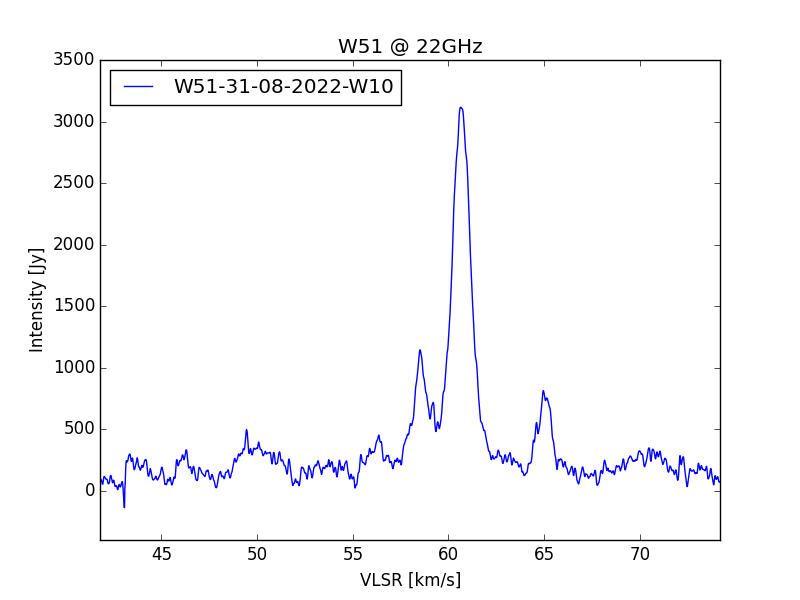

[HOME]
[WEB ALBUMS]
[PROJECTS]
[ARCHIVE]
[DOWNLOADS]
[LINKS]
PROJECTS
Project MK27: W51
When reading papers about W51 we came across this sentence.
"Throughout the entire VLSR range (-50kms-1 to 130kms-1) the kinematics are predominated by random motions.
In other maser clusters, their kinematics have never been well understood."
So, here we are at the edge of the unkown.
The number "51" was first used by Gard Westerhout in his catalog of 1958.
He remarked when examining the Mount Palomar photographic plate;
"A roughly circular, very faint emission region, irregular structure, in a highly darkened region.
If the identification is correct, it must be very heavily obscured."
Indeed a irregular highly darkened region, because it is a star forming region (SFR).
In literature it is mentioned that at least 5 solar systems are developing.
When looking at the 22GHz water maser signals it is logical that they are entangled and are overlapping because they have roughly thesame velocity.
In our 2022 season we captured next results on a W10 machine.

W51-4days-result
We see that the 58.5 km/s feature intensity is small on 10-06-2022 but rises later on.
We want to compare the profile with the results from literature.

W51-VLBI-spacial referenced peaks
See below papers for more info

W51-H2O-spectrum-measured-July-8-1975
One can see that the profile form fits the profile in this work.
The profile above the upper dotted line matches. In our plot the upper dotted line is the zero reference line.
It means that our zero line is the 16K line in the graph.
Next we can add an intensity scale to o0ur plot also. So the main peak would be 3100Jy and the minimum detectable peak would be 100Jy.

W51-31-08-2022-W10

W51-artist-impression
pdf1 :Gart Westerhout--1958BAN....14..215W
pdf2 :New_VLBI_maps_of_H2O_sources_in_different_stages_o
pdf3 :Zapata_2009_ApJ_698_1422
Michiel Klaassen Februari 2023